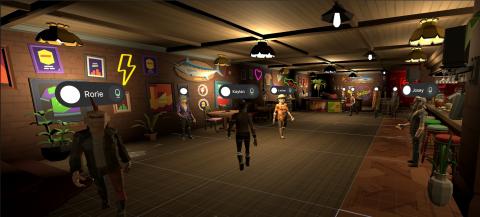
Introduction
Social Virtual Reality games have become increasingly popular over the last few years. This is especially true for the younger generation who are flocking to games like VRChat and RecRoom in droves. Unfortunately, where there is online anonymity, there is toxicity and harassment. This thesis recognises the need to ensure that players are equipped with the best possible tools to defend themselves against such negativity. It questions whether the current status quo of using a menu system to mute, block, and report toxic players is enough, or is there value in adding a new interaction method. Enter the gesture. By moving your hand in a specific way, you can perform these three actions. In order to test this, a short VR experiment was developed in which players were asked to use both methods and report back how they felt about each.
Demonstration video of the VR experiment
Data Collection
The study involved 21 participants who each played through the experiment. They learnt how to use the gestures, the control menu and were given the opportunity to use whichever method they preferred in the final level. The experiment recorded how long they spent on each method, and which one they preferred to use. It also recorded how often they made a mistake with the gestures. After they completed the experiment they were given a questionnaire which asked how they felt about the two methods.
Results
Unfortunately, many participants experienced reliability issues with the gesture system that were not intended which likely skews the results. Despite this 33% of participants still said they preferred the gesture system over the control menu. This was attributed to its speed, novelty, and more engaging nature over the menu system. The data suggests that while the majority of participants preferred the control menu due to its reliability and ease of use; it also suggests that had the gestures not suffered its reliability issues they would likely have been preferred. Further research with a more reliable gesture system is recommended to determine this factor more accurately.
Findings
The thesis provides several key considerations that should be taken into account when creating a gesture based interaction system for defence against toxicity in social VR games. They are as follows:
- Gestures should not replace the control menu.
- Gestures are fun, easy, and fast when implemented correctly.
- Ensure the gesture recognition system is reliable.
- Muting is an appropriate action to be made a gesture.
- Keep gestures simple and metaphorically tied to the action.
- Consider the gestures as shapes not movements if possible.
- Ensure the targeting system is robust and easily understood.
With these factors taken into account, the thesis concludes that a well implemented gesture system can likely improve the user experience of social VR games. It will do this by providing players with more options to defend themselves against toxicity in a way that appeals to them, making them more likely to use these tools and therefore experience less toxicity.
